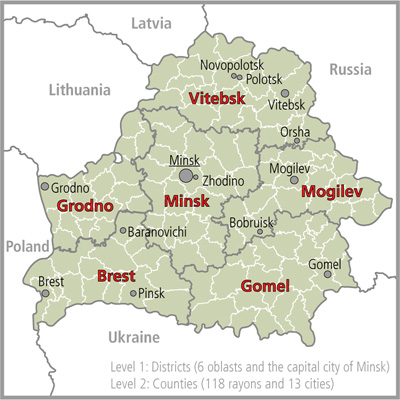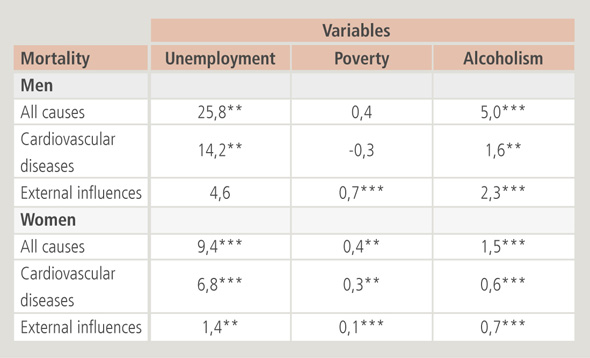April 10, 2014 | News | New Publication
The gap is widening

People in western Belarus live longer than people in the eastern part of the country. Residents of the capital city are also advantaged. © wueStenfUXX / photocase.com
(The following text is based on the original article "The gap is widening" by MPIDR researcher Pavel Grigoriev has also been published in the issue 01/2014 of the demographic quarterly Demografische Forschung aus Erster Hand.)
After the collapse of the USSR the mortality rate increased in all of the former Soviet republics. A team led by Pavel Grigoriev investigated the current situation in Belarus. They examined the reasons for the growing disparities between the regions. Their findings indicated that the additional deaths are largely attributable to alcohol, unemployment, and poverty.
After the dissolution of the Soviet Union in 1991 almost all of the former republics faced massive problems. Rising alcohol consumption, psychological stress as a result of the socioeconomic crisis, and a deteriorating health care system led to sharp increases in mortality rates throughout the region.
Belarus was not spared these problems, even though the situation there was not quite as severe there as it was in many other former republics. Pavel Grigoriev of the Max Planck Institute for Demographic Research in Rostock and his colleagues investigated how the mortality rate in the eastern European country has changed, specifically over the period between 1990 and 2007. A main goal of their study was to identify regional differences and the reasons for these disparities. In addition, the researchers wanted to find out to what extent the nuclear reactor accident in Chernobyl had affected mortality in Belarus.
For their investigation the demographers relied in part on previously unpublished data from the National Statistical Committee of the Republic of Belarus, or Belstat. Detailed information for the various regions, called oblasts (see Fig. 1), is available for the years 1997 to 2007. Similar data at the level of the individual counties (rajones) and cities are available for the period 2003 to 2007. For the years prior to 1997 the researchers had to rely on incomplete information. The data that did exist were, however, considered to be of relatively good quality. For the analysis of the mortality rates, the researchers took into account the ages of the population groups studied.

Fig. 1: Belarus is organized into six administrative regions (oblasts) with 118 counties (rajones). The capital city of Minsk has a special status and is not included in any of the oblasts. © www.diva-gis.org
The results of Grigoriev and his colleagues indicated that between 1990 and 1995 mortality rose in the entire country. In the capital city of Minsk the average life expectancy for men decreased by 4.7 years. Even in the western oblast of Brest, which was the least affected by the changes, life expectancy for men still fell by 2.9 years. The researchers observed that the residents of big cities appear to have been particularly vulnerable to the socioeconomic effects of the collapse of the Soviet Union.
By the end of the 1990s the situation in Brest had stabilized. By 2007 the residents of the capital city even had the highest life expectancy in the country: 67.4 years for men and 77.8 years for women. The residents of Brest were in second place. The lowest life expectancy was registered in the Minsk oblast: in 2007, newborn boys had an average life expectancy of just 62.8 years, while newborn girls could look forward to living an average of 75 years. Overall, men in Belarus have a shorter life expectancy today than they did during the Soviet era. For women, by contrast, the situation is slightly better, mainly due to the higher life expectancy in the capital city. The leading causes of death in the country are cardiovascular diseases, external causes, and cancer. These external causes include accidents, murders, suicides, and alcohol poisoning.
In general, the disparities between the individual districts of Belarus have increased over the past two decades. The gaps are attributable above all to the deaths of men from external causes, Grigoriev and his team found. The regional disparities are smallest for deaths from cancer, according to the researchers.
The data from the rajones reveal another important trend: in the east of the country people are dying earlier than they are in the west. The mortality risk in the east was found to be seven percent higher for men and as much as 8.5 percent higher for women. The demographers’ analyses indicated that the differences in mortality rates are mainly attributable to unemployment, poverty, and alcoholism. (see Tab. 1). Deaths from cardiovascular diseases or accidents are often the result of alcoholism and unemployment, while murders and suicides are heavily linked to poverty.

Tab. 1: The table shows how the different variables affected mortality in Belarus in the period 1997 to 2007. The analysis included men and women between the ages of 15 and 64. The influence of the age-standardized mortality rate per 100,000 residents for various causes of death is shown. A positive value indicates that the mortality rate rose, while a negative value indicates that the mortality rate sank. Three asterisks next to a value means that the result is highly significant, while two asterisks indicate that the result is moderately significant, and no asterisks means the result is not significant. © Belstat (1997-2007, 2009b and previously unpublished data), the authors’ own calculations.
The extent to which the Chernobyl nuclear reactor disaster, which resulted in serious radioactive contamination of Belarus in April 1986, affected mortality rates could not be clearly determined in the study. Grigoriev and his colleagues noted the presence of some clusters of increased numbers of death due to certain forms of cancer, especially in the southeastern part of the country which experienced the worst effects of the accident. But the researchers were unable to explain why these clusters appear to have been isolated, while neighboring areas that were equally contaminated were not found to have increased cancer death rates.
Literature
Grigoriev, P., G. Doblhammer-Reiter and V.M. Shkolnikov: Trends, patterns, and determinants of regional mortality in Belarus, 1990–2007. Population Studies, 67(2013)1, 61-81. DOI: 10.1080/00324728.2012.724696